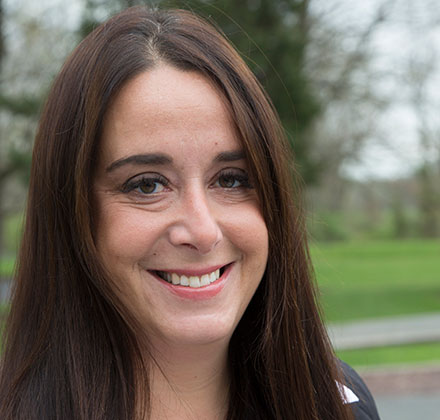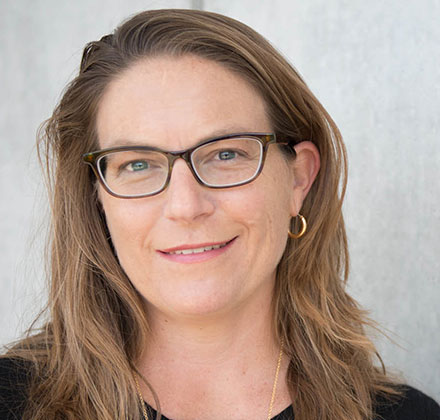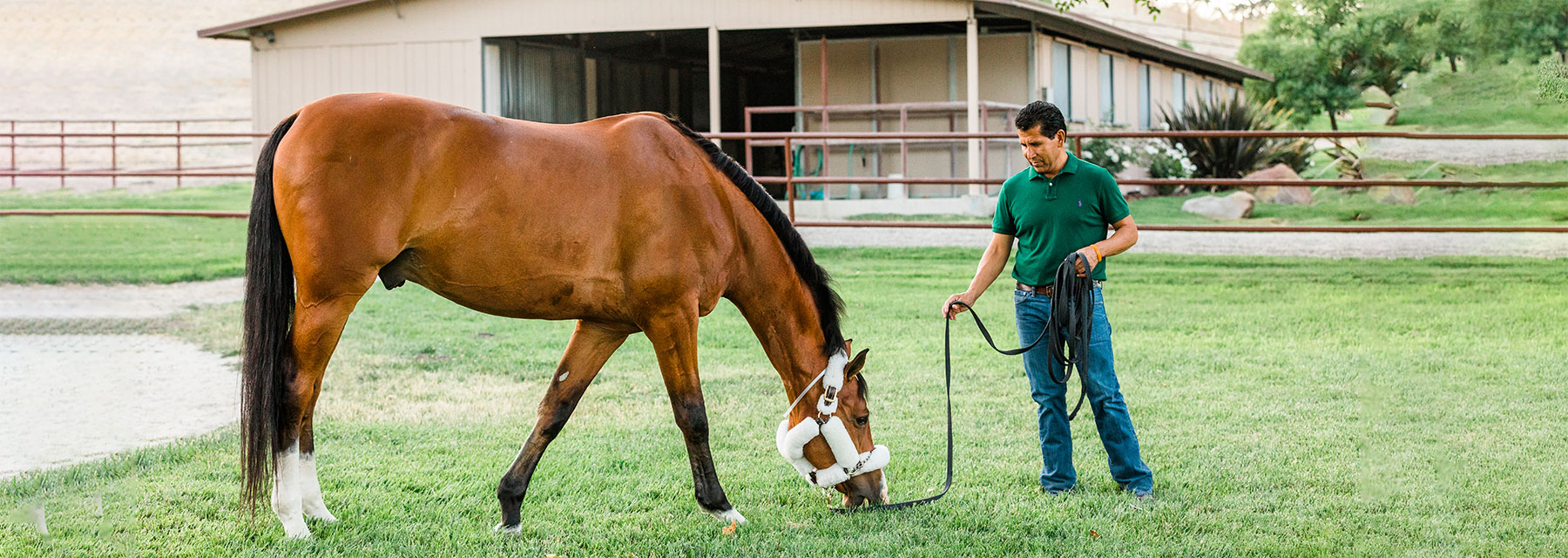How Veterinary-Directed Rehabilitation is Returning Injured Equine Athletes to the Highest Levels of Competition
The world of equine sports medicine and rehabilitation is an intricate and highly-specialized field that, to the untrained eye, may look simple but in reality is anything but. Past the need for recovering horses to receive the right rehabilitation for their respective injuries, there is an equal if not greater need for the program to be directed by a veterinarian.
"One of the most common reasons for treatment to fail is poor rehabilitation,” says Dr. David Frisbie of Colorado State University’s Orthopaedic Research Center and co-founder of Equine Core, Inc. (eCORE), Fort Collins, CO, and Managing Partner of eCORE – North Texas, a specialized veterinarian-directed and veterinarian-owned rehab facility in Whitesboro, Texas. To Dr. Frisbie’s point, take a horse with a torn suspensory, for instance. A skilled equine veterinarian can oftentimes provide the correct medical treatment to help repair the injury, but what are the next steps in giving that horse the best chance of returning to work sound and healthy? Dr. Sarah Gold of BW Furlong and Associates and Furlong’s Soundness Center in Oldwick, New Jersey, is empathetic toward horse owners who feel an all-too-common level of uncertainty when looking for the most positive outcome for an injured horse. “Diagnose, treat, now what? For horses to have the best chance at a positive outcome, they have to be properly rehabbed after an injury,” she says. While there is no question that horses benefit from an individualized rehab program, the reality of how those programs are developed and executed is based on sound science, deep experience and a heavy reliance on a strong medical foundation.
The Rise of Rehab
“When the founder of our practice had shoulder surgery done on himself he was absolutely blown away by the rehab they put him through,” says Dr. Gold of her colleague, Dr. Brendan Furlong, founder of both BW Furlong and Associates and Furlong’s Soundness Center. “He thought, ‘we’re so far behind in the horse world, and I really need to try to do something about it.’ ” It was then that Furlong’s Soundness Center was born. Under the stewardship of Dr. Furlong and the daily leadership of Dr. Gold, Furlong’s Soundness Center established a goal of transforming equine rehabilitation from a gray area in equine veterinary medicine to a highly-personalized, medically-sound program led by specially-trained veterinarians. Meanwhile, Dr. Frisbie and his colleagues at Colorado State University (Principle Dr. Melissa King) have dedicated themselves in a similar fashion, developing a program that operates out of the university while also establishing eCORE (with Aaron Wallace and Dr. Sherry Johnson), which specializes in equine rehabilitation strictly managed by veterinarians boarded in equine sports medicine and rehabilitation. The eCORE – North Texas facility is also unique because it is owned and managed by veterinarians, all with a key interest in providing exceptional patient care.
Today’s landscape is a far cry from the equine rehabilitation of yesteryear that saw horse owners hauling a recently injured horse home from the veterinary hospital to figure out post-injury or post-surgical care largely on their own. Technology was scarce, science-based rehab protocols were nearly non-existent, and it was a common practice to stall an injured horse or simply turn them out to pasture for time off. “The mentality back then was that if you had a bad soft tissue injury, then you may as well give up on the horse because they’re never going to heal,” remembers Dr. Carrie Schlachter of Animals in Motion based out of Penngrove, California. Equine rehabilitation has evolved dramatically to now offer evidence-based therapies and a long line of successful cases on which to base treatment protocols.

A rehabilitation technician at Furlong’s Soundness
Center applies laser therapy to a patient.
Sports Medicine and Rehabilitation: a Specialty
One such advancement in the field is the most recent addition to the AVMA American Board of Veterinary Specialties. The relatively new American College of Veterinary Sports Medicine and Rehabilitation has seen respected veterinarians, such as Drs. Schlachter, Frisbie and King, becoming boarded specialists. “This program has afforded me the opportunity to be surrounded by people that think about this specialty, want to study it and therefore offer a wonderful exchange of information,” says Dr. Gold, a current resident working toward a board accreditation in Sports Medicine and Rehabilitation, all while continuing her daily work in clinical practice. “This has given me an alternative pathway, allowing me to remain in private practice while spending time at the University programs at Colorado State and Tennessee as well as with various incredible private practitioners as part of my residency. That benefits our patients because of this strong network of people I can call on when a horse comes in.”
A primary goal of the college is to generate more evidence-based science and research studies for rehabilitation techniques. With 300 boarded veterinarians expected over the next five years, the deep well of knowledge and dedication to further improving protocols and research is expanding exponentially.
Veterinary-Directed Rehab: What and Why?
One of the most important things for horse owners to remember is that recovery is determined by a delicate and methodical program that works to rehab an injured horse with tools that gradually strengthen and stabilize an injury to the point of a successful return to work. “If the horse doesn’t get better, it’s not necessarily that the treatment failed,” says Dr. Gold emphatically. “It’s that the horse wasn’t rehabbed properly from the beginning. As veterinarians our goal, first and foremost, is to do no harm. But at the same time, we have to push the envelope a little bit.” With so many tools, a broad range of technology and a long list of modalities available, the need for a veterinary-directed program is clear. “As veterinarians, we combine education and technology with the ability to change a horse’s program on the fly in an effort to not only heal but to prevent re-injury,” says Dr. Schlachter
Veterinarians steer their rehab programs with not just specialized training in the various rehab modalities available but with a deep physiological understanding of the horse and a collection of experiences from which to draw. “Working with a veterinarian that deals specifically with rehab cases means you get the wealth of knowledge of, for instance, not just a handful of suspensories that they’ve done, but the hundreds of suspensory cases they’ve rehabbed,” says Dr. Schlachter. “Further than that, the network aspect of it is interesting,” she continues. Today, veterinarians specializing in equine rehabilitation have a large pool of colleagues they rely on to discuss cases and weigh treatment options. “It’s a team,” says Dr. Gold. “My relationships with the referring veterinarians becomes very important, and they have a very integral role in what we’re doing.” Her point is echoed strongly by Dr. Frisbie, who ensures that eCORE is committed to keeping a horse’s primary veterinarian apprised of their progress in rehab and involved along the way. It’s a collaborative approach that yields better results for the patient and increased knowledge for the veterinarians and veterinary community as a whole.
“We have enough information, and studies underway that tell us there really is sound science and proven results behind this,” says Dr. Schlachter. “Whenever a horse owner is on the fence as to the need for a veterinary-directed rehab program for their horse, I tell them that I understand it’s a financial commitment, however, they’re getting a specialized team that will make educated recommendations and give it everything we’ve got in order for this horse to heal.”

David Frisbie, DVM, DACVSMR, DACVS
Colorado State University’s Orthopaedic Research Center

Sarah Gold, DVM
BW Furlong and Associates and Furlong’s Soundness Center

Carrie Schlachter, VMD, DACVSMR
Animals in Motion
Follow-Up is King
Perhaps one of the most important aspects of a veterinary-directed rehab program is follow-up. It’s a frustration felt by many veterinarians and veterinary surgeons. They see a horse with an injury, they may perform a successful surgery on that horse, but what happens next? It’s common for a veterinary surgeon at a referral hospital to operate then, upon discharge, never see that horse again.
“Rehab veterinarians can do weekly assessments,” says Dr. Frisbie. “Simple follow-up makes a huge difference in success.” When a horse is given the advantage of continual re-evaluation and monitoring by specialized veterinarians, it allows for a proactive approach. Follow-up not only increases our knowledge as veterinarians, but we can make more informed decisions based on that horse’s medical history and also our experience with other cases.
A Look at the Process
Veterinary-directed equine rehab is an intricate mix of experience, science, technology and tools that comes together to create the most ideal program for each individual horse. Treatment modalities and therapeutic exercise programs are carefully chosen and personalized to each case, pushing horses to recover while respecting each animal’s response and pace of progress.
“When your horse is admitted here, we tailor the treatment plan specifically toward that horse, and all of the activities we’re doing have scientific soundness behind them,” says Dr. Gold. “After an initial assessment, we may start with walking a horse in a straight line on a treadmill. That may sound rudimentary, but you have to consider that horse has probably been asymmetrical for a long time, compensating for an injury that finally went clinical. You can see them straighten out and this is an important early step in the rehab process.”
A veterinary-directed rehab program has a lengthy list of tools at their disposal, from the hot walker and vibration plate to the ECB Cold Spa and underwater treadmill. The underwater treadmill, in particular, was a monumental advancement in equine rehab and has been studied at length to produce concrete evidence of its effectiveness. “We have hard data to show the advantages in underwater treadmilling versus above ground,” says Dr. Frisbie. It’s a therapy that rehab specialists rely heavily upon. “As soon as we can we’ll start putting them into the water, which adds a different component of strength training and conditioning,” adds Dr. Gold. There has been tremendous progress in the use of underwater treadmilling, as well as greater information that has impacted previously difficult-to-treat injuries. “When I started 10 years ago, everyone told me ‘don’t put a hind suspensory in the underwater treadmill,’ ” remembers Dr. Schlachter. “My population is 90 percent middle-aged sport horses, I see a lot of hind suspensories. Every single one I’ve put in the underwater treadmill has been successful in the long run. I take all of their information, then work backwards, knowing there’s a greater range of motion in the hock. We know that the underwater treadmill will put greater stress on the suspensory, so we don’t want to do that until the tensile strength is high enough. I wait 60 to 90 days until I put my hind suspensories into the underwater treadmill, and they heal just as well if not better than if they were in a controlled hand walking program.” The knowledge gleaned from years of experience allows these specialized practitioners to make informed decisions that can produce a more positive outcome while not taking undue risks with the patient. Dr. Schlachter continues, “instances like this leave me able to safely experiment and say ‘I know I can heal them, and it doesn’t hurt them, so let’s take some of these chronic suspensories that are often going to surgery to try to release the fascia, and lets combine it with something like Shock Wave or laser therapy, then put them in the underwater treadmill. That pain-relieving ability coupled with the increased range of motion that comes with the underwater treadmill now gives these horses a chance at avoiding surgery. It’s working.’ ”
While underwater treadmilling is seen as a significant and highly effective treatment that is now commonplace in equine rehabilitation, there are other more advanced modalities — both established and emerging — that are powerful tools in the hands of a rehab veterinarian. “We have a regenerative laser that works very differently than your traditional cold lasers that you’ll find in barns,” says Dr. Gold. “It’s a very high-powered modality, which actually has the ability to regenerate tissues to start growing them back in a biomechanical, meaningful way. It’s the only tool I’ve seen that can remodel scar tissue and mitigate chronic injury and inflammation.” Where the regenerative laser treats the injury site itself, Functional Electric Stimulation is used when trying to prevent re-injury. “This is similar to a souped-up TENS Unit (Transcutaneous Electrical Nerve Stimulation),” says Dr. Schlachter. “For instance, we may have a horse with a right front injury, but he also has a weak left hind. While the horse is already in rehab for the right front, we can go ahead and address the left hind weakness using something like Functional Electric Stimulation.” With veterinarians and specially-trained techs well-versed in picking up on the subtle cues that point to a further problem, horses have an advantage.

Rehabilitation technicians at Circle Oak Equine and Rehabilitation
Center guide a horse in the underwater treadmill.
Managing Inflammation with Nutrition
A rehab veterinarian’s primary focus in the days immediately following injury or surgery is to control the level of inflammation, not only acutely at the injury site but also systemically in the horse. It’s a ‘one health’ concept that has taken hold in not only veterinary medicine but human medicine as well. The idea is the body cannot heal to its greatest potential when inflammation is left unchecked. “The first thing I try and do is decrease the inflammation,” says Dr. Schlachter. “Apart from rest, icing, laser and the other external tools, a great way to decrease inflammation is to act on a horse’s body internally, and that starts with diet and the right supplementation. I want to make sure we’re getting rid of things that are inflammatory like sugars and grains, then we’re adding things that are anti-inflammatory like omega-3 and antioxidant supplements or medicine. But if it’s going to be a minimum of 30 days, I want it to be supplement based rather than medicine.” Dr. Frisbie also explains that, in terms of orthopedic injuries, it’s about providing the right building blocks for the joint and soft tissues to heal optimally. “How do we optimize and strengthen,” asks Dr. Frisbie hypothetically. “We know that if you’re able to increase the building blocks for the articular cartilage, that can facilitate better healing in the joint. Having the correct balance of nutrients is key, especially when you’re dealing with inflammation and pain. A lot of therapies come from oral or nutritional supplements.”
Dr. Gold echoes the importance of providing the proper building blocks both preventively and therapeutically to horses who have sustained an orthopedic injury. “Nutrition offers the building blocks of good health,” she says. As an intern, Dr. Gold worked with Platinum Performance® founder, Dr. Doug Herthel, at his Alamo Pintado Equine Medical Center. “After that experience, when we chose how to supplement our patients at Furlong’s Soundness Center, we wanted to do it for health on the inside but also to get a healthy-looking horse on the outside. That was the basis for choosing Platinum. We order the big drums, and everyone gets it. I know that I’m covering my bases for their health and giving them what their bodies need to recover. Whether the horse is healing, conditioning or putting on muscle, every horse needs nutritional support. When it comes to supplements, you get what you pay for. I can say with a lot of confidence that I personally know the people that developed Platinum, I’ve seen the factory, and I see the work, thought and quality of ingredients that goes into it. I support the company because of that and their commitment to research.”
“I know that I’m covering my bases for their health and giving them what their bodies need to recover.
Whether the horse is healing, conditioning or putting on muscle, every horse needs nutritional support.”
— Dr. Sarah Gold, BW Furlong and Associates and Furlong’s Soundness Center
Technology
In terms of the effectiveness of equine rehabilitation, rapidly-advancing technology has been nothing short of a game-changer. “We have a lot of technology available to us, and it’s outpacing our ability to even keep up with it and study it,” says Dr. Schlachter. To her, there are three things that have transformed the field of equine rehabilitation above all else: the collaborative environment allowed by technology, the increased quality and shareability of imagery, such as MRI and ultrasound, and finally, the real-time monitoring capabilities. “The world is getting smaller. The benefit of that is that now I get clients and veterinarians from all around the world that reach out to me about cases and protocols,” she says. “In terms of imagery, advancements mean better diagnosis and that equals better rehab. As far as monitoring, the wireless technologies that are out there now have allowed us to, for instance, use the heart rate monitor in the underwater treadmill to assess how a horse is doing.”
Dr. Frisbie and his colleagues at eCORE use advances in technology to collaborate with each other, referring veterinarians and clients. “We have the ability to upload stills and videos and assess them remotely,” says Dr. Frisbie. “Owners and veterinarians can log in to see how it’s going. Technology allows us a greater reach, faster decision-making and, ultimately, better treatment.” Similarly, Dr. Gold uses technology to essentially be two places at once. “I spend four months out of the year treating horses in Florida,” she says. “We’re able to send mobile-accessible imagery immediately, and my staff is Face Timing me, walking horses right in front of me. It allows us to maintain a consistent, high level of care, regardless of where the veterinarian, patient or client may be at any particular moment.”
The Right Things Stay the Same
With constantly evolving technology, treatment modalities and research, the world of veterinary-directed equine rehabilitation has a bright future. “Our goal is always to push the envelope in terms of where we can go with our treatments and technologies,” says Dr. Schlachter. Even with ever-advancing tools at their fingertips, the motivation behind these veterinarians’ work is the same as it has always been. “It’s a privilege to be around these horses and their very dedicated owners,” says Dr. Gold. “We try to do everything we possibly can for them. The health and well-being of the horse will always come first.”
While Drs. Frisbie and King, along with the team at Colorado State continually further the reach of equine research to impact future treatments and facilitate more successful outcomes, the work happening in practice has a profound impact on the field. Dr. Gold reminds herself daily that she may be treating a show jumper at the highest level of the sport, with an equally high monetary value but that every horse she treats is priceless to the person that loves them, and every horse deserves a chance to heal. Ask most veterinarians, and they’ll agree without hesitation. “I’m interested in the horses that you ‘can’t fix,’ ” says Dr. Schlachter. “Those cases drew me to rehabilitation. My love, still, are those cases where everyone has given up on them or that no one knows what’s wrong. Those cases are special to me.”

by Jessie Bengoa,
Platinum Performance®
